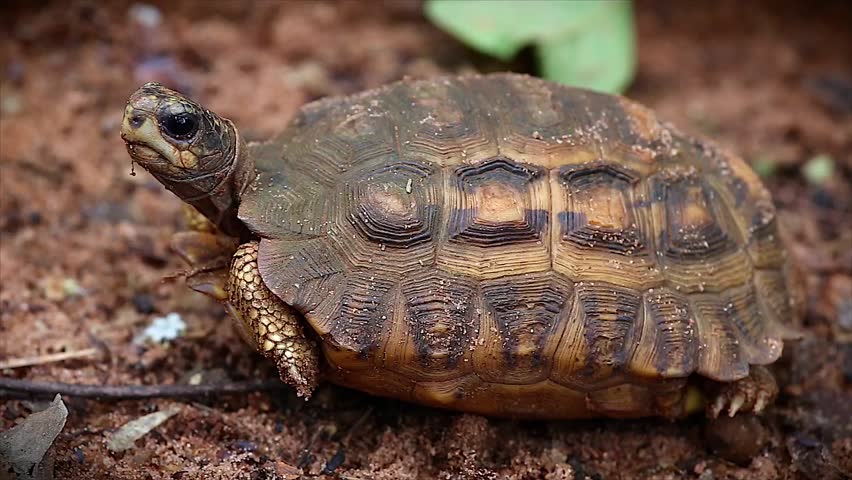ANIMAL: Flat-Backed Spider Tortoise/Madagascar Flat-Tailed Tortoise Pyxis planicauda Type of Animal: Tortoise Habitat: Forests Location(s): C W Madagascar Appearance: Flat patterned oblong (usually light brown to yellow w/ some dark brown/black outlining) carapace (upper shell) & tail, older tortoises have more yellow, yellow plastron (lower shell) w/ scattered dark spots/rays, yellow to brown scaly limbs, dark brown to black head (usually w/ yellow markings, 2nd smallest tortoise in Madagascar after Madagascar Spider Tortoise Food/Diet: Fruit, fallen flowers, tree/shrub foliage, vegetation, leafy greens, vegetables, fungi, carrion Status in Wild: Critically Endangered Conservation: Breeding in zoos & breeding centers Lifestyle: Solitary Additional Info: Called: Male Female Young: Hatchling Group: Solitary Weight: Male: 10.58-14.10 oz Female: 16.76-23.63 oz Gestation: 11 months Life Span: 50 years Body Length: Male: 5.9 in Female: 5.11 in Young: 2 in Tail Length: Male: Longer/Thicker Female: Shorter/Thinner Main predators are dogs, mongooses, Malagasy carnivores, cats, pigs, raptors, & snakes. Critically endangered due to pet trade, habitat loss, deforestation, slow reproductive rate, invasive predators, agriculture, poaching for meat/body parts/eggs, mining, development, & petroleum/oil exploration, charcoal demand, & intestinal/blood parasites. Females produce 3 single egg clutches a year. Also called Flat-Tailed/Flat-Shelled Spider Tortoise/Madagascar Flat-Shelled Tortoise. Usually breed in rainy/wet season. Often inactive in longer dry season, taking shelter in leaf litter/burrows, becoming more dormant when weather cooler. There are less than 5,000 of these tortoises remaining in the wild. Sexually mature at 6 years old. Get name from flat shell/back/tail & web-like pattern on shell. Active at dawn/dusk (crepuscular). They’re a very shy species. They camouflage very well in leaf litter. Due to being more torpid in dry season, much more vulnerable to predation at this time. Fun Fact(s): Young often remain in diapause (stasis w/o development) in egg until favorable conditions reached. Locally known as Kapidolo (ghost turtle) due to often being seen around tombs.
